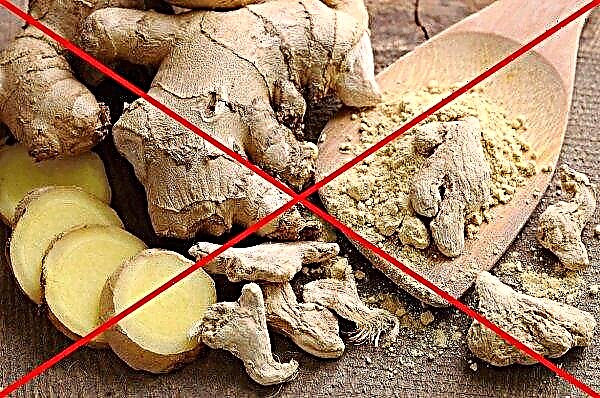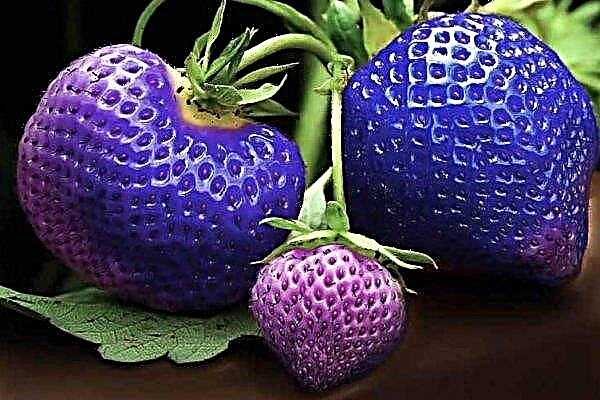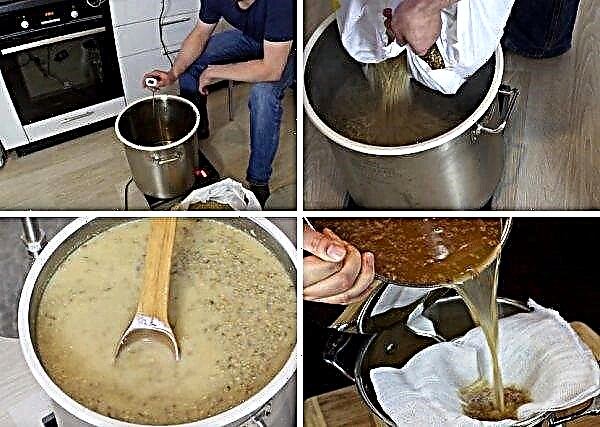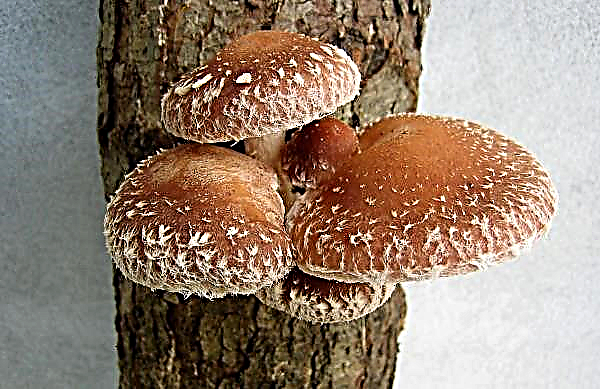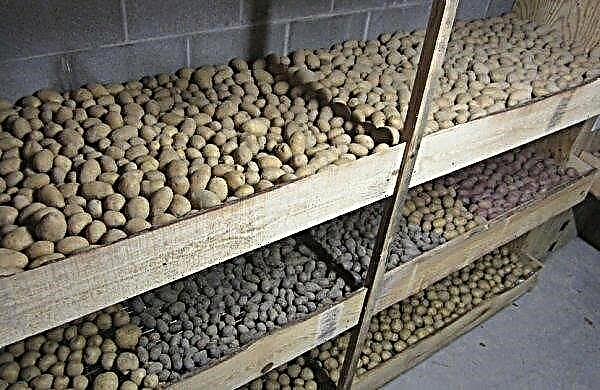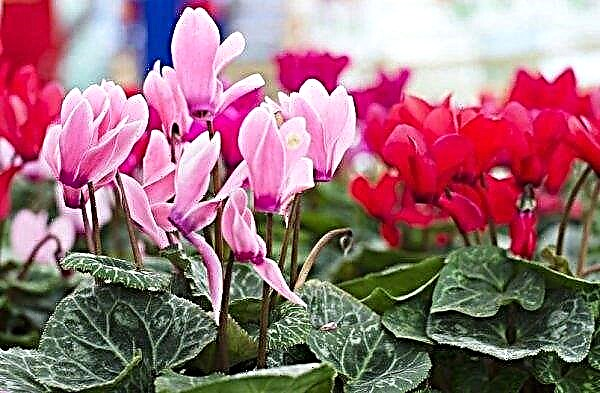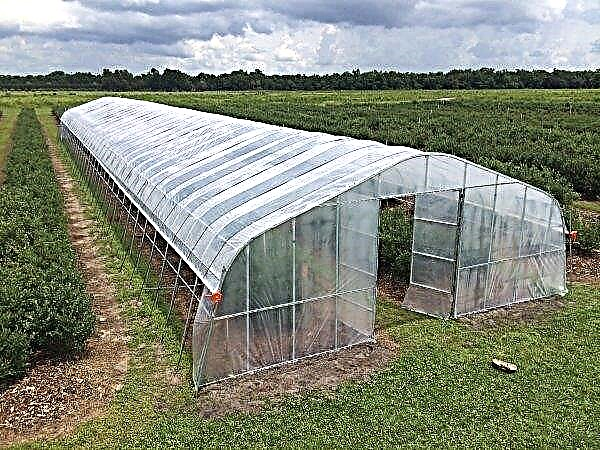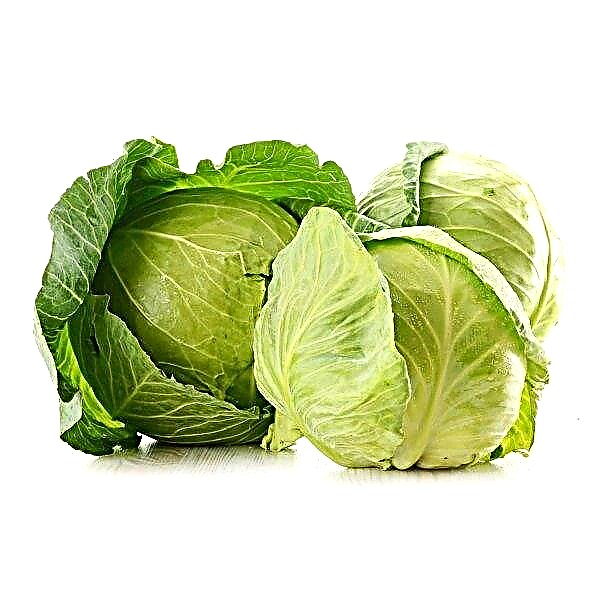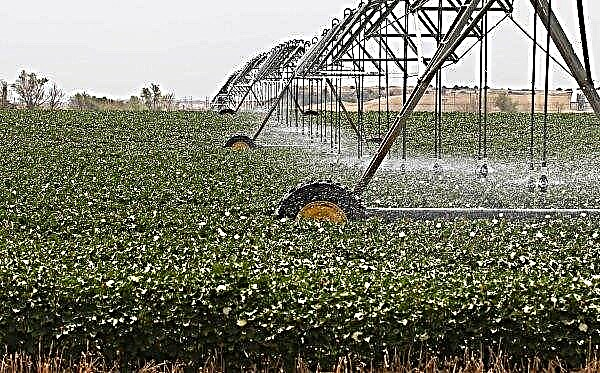Pepper is a perennial plant that is the most consumed spice in the world. Many gardeners grow this crop in their plots. Although recently you can find peppers grown at home. We will talk about how to grow a decorative pepper without leaving home, which varieties are the best, how to properly care for this representative of the flora in our article.
The best varieties of indoor pepper
Bitter and sweet peppers with the same success can be planted and grown both in the garden and at home, right in the pot. Today there is a wide range of different varieties, the characteristics of each of which we will try to understand.
Oblong shape
Among a wide variety of subspecies of peppers there are varieties of oblong shape. They are represented by a rich palette of various variations, each of which has its own unique properties. We present to your attention a selection of the most popular varieties of peppers of oblong shape.
Did you know? During the ripening process, closer to its completion, peppers of the lion's share of varieties grown indoors, change their color from pale green to saturated green, cream, yellow, orange, purple and red, pleasing the eye with their colorful fruits.
Bell pepper
Familiar bell peppers are classified as mid-season in terms of ripening speed. This variety can also be grown at home on the windowsill. In height, such a bush can grow up to 40 cm. Its fruits are juicy, tasty, have an oblong shape. They can be perfectly used both for salting and eaten fresh. The color scheme - all shades of light green, green and yellow. The variety is unpretentious to growing conditions, universal.

Small miracle
Variety Little Miracle is an early species, reaching no more than 30 cm in height. The brightness and beauty of the conical fruits is comparable to the bud of an unopened tulip flower. Reaching a length of 7 cm, the vegetable weighs only 5 g and has bright and juicy green shades. Such a plant is perfect for landscaping terraces, balconies and kitchens, and you can harvest already on the 60th day from the moment of planting. This pepper tastes very hot.

Confetti
The Confetti variety has established itself on the part of increased fertility. It has a small branching, small oblong fruits. A bright palette of pungent tastes and a pleasant, delicate aroma are integral features of this variety. The color scheme can vary from pale green and yellow to saturated and bright shades of purple and red. Sowing of seeds occurs in mid-March or early April. After about 70 days, you can wait for the ripening of the first crop.

Hungarian yellow
The Hungarian yellow variety is frost-resistant, immune to drafts and coolness on the windowsill. Tall, thick-skinned and large-fruited representative of peppers has a bright yellow hue of fruits, thanks to which it got its name. One fruit of this houseplant can weigh up to 20 g, and the full ripening of the first vegetables is already achieved on the 90th day from the moment of planting.

Colorful fish
A multi-colored fish is called one of the most bitter varieties of indoor pepper. Striped fruits alternating yellow, green, red, brown and purple segments fully justify their name. The oval shape, fleshy structure and juiciness make these vegetables wonderful neighbors with other ingredients in a wide variety of dishes. Ripening begins on the 75-100th day. This variety requires heat, sunlight and moderate humidity.
Salute
Salute peppers reach a length of 15 centimeters and have an elongated shape. Fruits at the ripening stage have a green and bright orange hue. The peel is quite thin (rarely exceeds 2 mm). The variety is suitable for fresh consumption, for canning or as a seasoning for dishes. Ripening time is 95 days.
Fireworks
The Fireworks variety is characterized by small, compact-shaped bushes, the height of which rarely exceeds 20 cm. In the process of growth, the color of vegetables changes. Ripe peppers have an intense red tint. The necessary time for full ripening of the first fruits is about 90 days. The fruits of this variety have a strong and pronounced aroma and taste. Fireworks are quite easy to grow in a regular pot on the windowsill, because it is completely undemanding in maintenance and care.

Varieties with unusual fruits
Special mention deserves such varieties that are characterized by non-standard, interesting and unusual forms of fruits. We bring to your attention a selection of varieties with rounded, heart-shaped, spiky, thin and long fruits.
Did you know? In the matter of efficient calorie burning and weight loss, a small amount of bitter pepper consumed can help.
Indian summer
Indian summer belongs to the varieties of medium ripening, the period of which is 100 days. Tall variety is characterized by increased density of leaves and meatiness of the fruit. It blooms with white and purple-purple buds, so it can be used both for practical and decorative purposes. Egg-shaped, rounded and ellipsoidal in shape peppers have a variety of color shades, from pale cream to dark purple, bright orange and rich red. Their weight varies between 20–40 g. The variety is unpretentious in maintenance and care.
The Queen of Spades
The variety Queen of Spades is also among the perennials of the middle ripening period. The height of the bush is 30 cm. The variety is distinguished by high fruiting.
Vegetables are ellipsoidal, bright, reaching a length of 5 to 7 cm. The weight of one pepper is about 6 g. Suitable for cultivation throughout the year. In winter and autumn, it is better to place the plant in the room, and from April to the end of September you can put it on the balcony.
Constellation
A constellation is a type of medium sized pepper. It is characterized by compactness of bushes up to 30 cm high. Small heart-shaped vegetables are characterized by a thin and absolutely smooth skin that is easy to peel. The weight indicator is about 10 g, and the color scheme prevails in the direction of violet-purple hues. From other varieties, this one differs in a pronounced pleasant aroma and high meatiness and juiciness of the fruits.
Aiji Dulce
Aiji Dulce is a beautiful and original mid-ripening plant. The height of the bush reaches average marks of 30–40 cm. Ribbed peel is inherent in vegetables, and their shape is like a heart of a bright crimson color. One of the main distinguishing features of this variety is that it has a soft, slightly pronounced taste and a pleasant sweet aroma of the fruit. The weight indicator often reaches the mark of 15 g. Pepper Aiji Dulce can perfectly complement a wide variety of dishes, including soups, rice and bean dishes.
Jellyfish
Medusa is one of the earliest varieties, whose full ripening period approaches 75 days. The format of the bushes is characterized by compactness, an average height of 25–35 cm.
Did you know? In antiquity, pepper was used not only for cooking, but also as a measure in the calculation. The ancient Romans, for example, received tribute and offerings from the conquered peoples with bitter or sweet peppers, and the medieval French paid off various punishments, giving a bribe in the form of several bags of pepper.
The long, slightly twisted, spiky fruits of orange and red tones are often compared with the hairs on the head of the legendary mystical creature Medusa Gorgon, on whose behalf the name of this variety originated. The number of such fruits on average can be 40-50 units per bush, and their shelf life is relatively high. Fear of cold and drafts is more than offset by ease of care.
How to plant indoor pepper from seeds
Perennial peppers are one of the most unpretentious crops that grow successfully if you follow a few simple rules.
Seed preparation
The first thing after purchasing seeds in a specialized store will be soaking them in a weak manganese solution for additional sterilization treatment and testing the seeds for suitability. All high-quality seeds will settle to the bottom, and unsuitable planting material will rise to the surface. The selected seeds are dried on paper towels or on the windowsill. After that, they are ready to land in the ground.
Important! When drying seeds on a windowsill, avoid direct sunlight, which can overdry and destroy the seed.
Seed germination
Place 2-3 seeds in one container for germination. After germination in one container, leave only one shoot, the largest and strongest, which can subsequently be transplanted to a permanent place of growth.

Planting young plants in a permanent place
Peppers should be planted in separate large containers, the diameter of which should be equal to the volume of the plant crown described on the package with seeds. Using a special spatula, dig 4–5 cm from the pepper leg. Next, with a lump of land, transplant a seedling into a previously prepared soil of the main pot. Deepen the root in the ground, sprinkle with earth, tamp a little and generously pour.
Cultivation and care
Below we have compiled basic recommendations on how to properly grow, maintain and care for peppers at home.
Optimal conditions for growing
An ideal place for a mini-garden is a windowsill on the south side of the apartment. Pepper seeds germinate very well when the ambient temperature is around + 26 ° C. If the place of growing indoor peppers is not heated well enough in the winter, then the best option to achieve the ideal temperature and to illuminate the plants will be to use an incandescent lamp. Since April, additional heating and lighting can be stopped.
Watering
Peppers tolerate water shortages well, but, like all plants, they grow better in moist soils. It is recommended to water peppers 2-3 times a week, as the top layer of the earth dries. It is better to do this by spray irrigation.

Pick
It is usually recommended that you dive early on the 15–20th day from the moment of seed planting. This feature is caused by the fact that at a later time, the root system of peppers becomes more developed, and, therefore, undergoes more serious damage, which negatively affects the health of the seedling. When picking, you should act carefully and slowly to prevent the likelihood of irreparable harm to plants. Some vegetable growers recommend dispensing with picking, initially planting seeds in separate containers.
Bush formation
The formation of the bush is also an important element in the rules for growing peppers. The first step is to remove the crown bud (first flower). When it appears, it should be cut with a sharp and clean knife. The second stage involves cutting off excess shoots when the crown will have more than 10-12 leaves. You need to leave 3-4 of the strongest shoots, and the rest to be removed. Leaves that too obscure the fruit are also subject to removal.
Important! One bush is able to grow 15–17 full and large peppers, which means that all the extra flowers and ovaries need to be cut off. Otherwise, you will get several tens of small and deformed fruits.
Stimulation of flowering and fruiting
It is possible to stimulate flowering and fruiting by feeding. The best option would be a nitrogen-containing fertilizer for indoor plants. Another good way to fertilize and make peppers bloom and bear fruit more actively will be a nutritious mixture consisting of 3 liters of water and 6 tbsp. l wood ash. If we talk about what other fertilizers are needed for decorative peppers, it is recommended to use potash and phosphorus top dressing.

Pest and Disease Control
The main diseases that can threaten domestic plants are putrefactive and mold damage, resulting from improper or excessive watering. They are characterized by the formation of gray, black or light gray deposits, similar to moss, on the stem, closer to the root, at the base of the leaves and along the branches of the plant. Putrid lesions can destroy the crop itself.
To prevent this, adhere to the watering regime and maintain optimal temperature conditions. If rot and mold began to develop, the damaged areas of the bush should be removed, and the plant itself should be treated with Fundazol, Skor, or Previkur. The preparations "Gamair", "Ridomil Gold", "Fitosporin-M" will help to cope with another ailment called late blight.
If your pepper blooms, but does not bear fruit, this may be due to non-observance of the temperature and humidity regime, lack of minerals in the soil or too much crown density. Correct these shortcomings, and pepper will delight you with a crop. If you followed all the rules in proper form, and the pepper still does not bear fruit, in this case, experts advise you to do the following: dilute 1 teaspoon of sugar in 150 ml of hot water, let the solution cool and spray the flowers. Fruiting should begin.
Features of winter care
In winter, plants do not have enough light and heat, and therefore they must be properly looked after. The daylight hours should be 12 hours. Temperature during the day - no lower than + 25 ° С, at night - no less than + 15 ° С. In the cold season, it will be useful to illuminate the plants with a conventional incandescent lamp.
Avoid drafts and excessive soil moisture, because in winter moisture usually evaporates much more slowly. Loosen the soil periodically and occasionally wipe the leaves from dust (once a week will be enough). You can spray peppers from the spray gun if the room is well heated. Otherwise, it is better to refuse water procedures.
Dates and basic rules for harvesting
Each type of pepper differs in its ripening time. There are early, middle and late varieties. About what category your representatives of the flora belong to, you can find out in the description of the seeds. The first fruits in early varieties may appear as early as 50-60 days after planting seeds, but peppers of other varieties may need more than 90-100 days to begin to bear fruit. It all depends on the characteristics of the variety and adherence to the rules of care and maintenance. Harvesting is possible as soon as the first ripe fruits appear. You can determine the ripeness by the size and color of the vegetable.
Guided by the recommendations given in our article on the preparation of seeds, their germination, picking, the rules for the care and maintenance of pepper bushes in the house, you can get the desired result and get your own mini-garden at home.Important! Do not pick fruits with your hands, it is better to use a knife. So you can protect the stem from damage.

